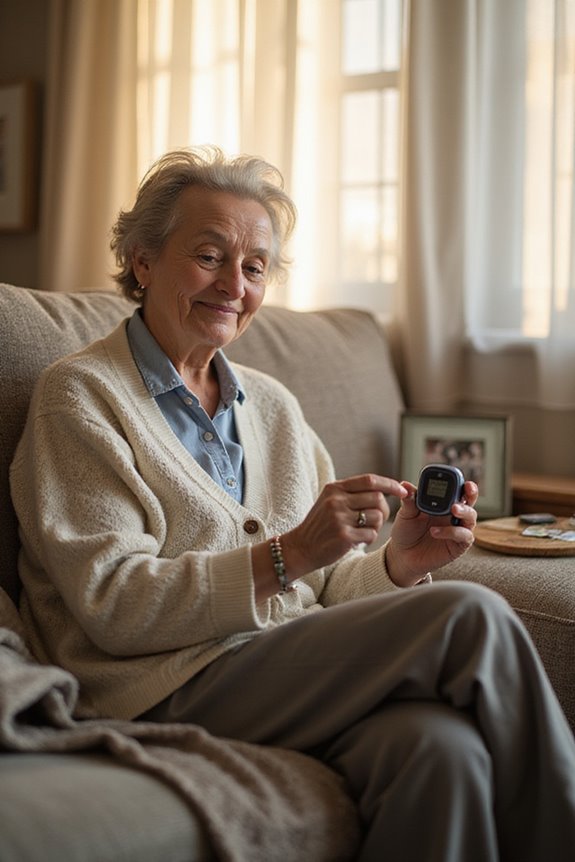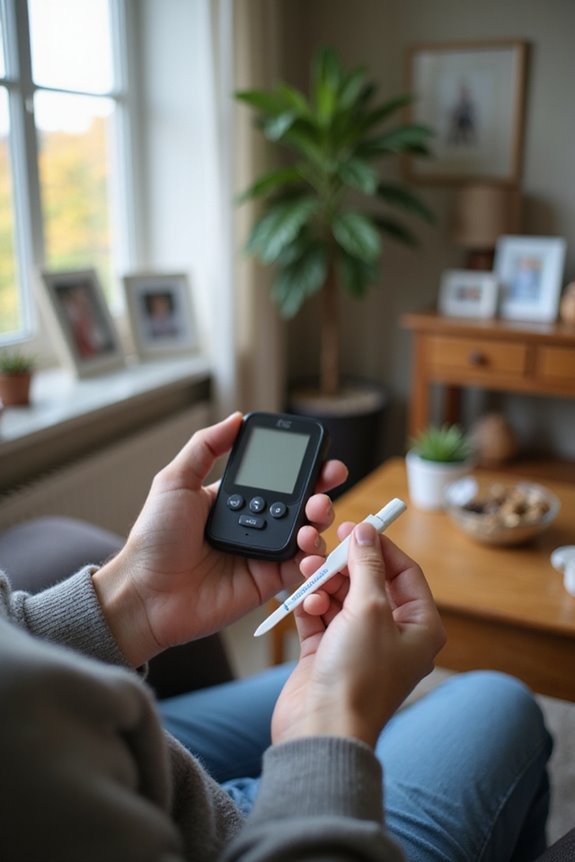Recent trends in glucose monitoring technology include significant advancements in continuous glucose monitoring (CGM) systems, such as improved sensor accuracy and user comfort. Non-invasive options utilizing optical methods and wearable devices are gaining popularity. The rise of artificial pancreas systems integrates CGMs with insulin pumps for optimized delivery. Additionally, AI is enhancing diabetes management through personalized treatment protocols and predictive analytics. Emerging trends in disposable CGMs emphasize user convenience and real-time tracking. Further exploration reveals more about these developments.
Key Takeaways
- Continuous Glucose Monitoring (CGM) systems now use advanced sensor materials for improved accuracy and longer wear times, enhancing user adherence.
- Non-invasive technologies, like near-infrared spectroscopy, provide painless glucose measurements through skin, increasing convenience for users.
- The rise of automated insulin delivery systems integrates CGMs with insulin pumps for real-time glucose control and streamlined diabetes management.
- Artificial Intelligence is personalizing diabetes treatment by analyzing real-time data for tailored nutrition plans and predictive alerts for glucose fluctuations.
- Disposable and single-use CGM devices are gaining traction due to their user-friendly designs and elimination of frequent calibrations, improving the overall experience.
Advancements in Continuous Glucose Monitoring Systems
In recent years, advancements in Continuous Glucose Monitoring (CGM) systems have greatly transformed diabetes management, enhancing both accuracy and user experience.
- Sensor Accuracy: New sensor materials introduced by 2025 have notably improved CGM accuracy, reducing the necessity for frequent fingerstick calibrations. Advanced optical and electronic technologies provide near real-time glucose readings with enhanced precision.
- User Adherence: Improved sensor comfort supports longer wear times, which encourages better adherence to continuous monitoring routines. Integration with smart technology enables automatic syncing and real-time alerts for hypo- or hyperglycemic trends, further promoting user engagement.
- Clinical Expansion: CGMs are now recommended for a wider demographic, including type 2 diabetes and pre-diabetes patients, making them a crucial tool in extensive diabetes management. Additionally, accurate glucose meters are essential for users to effectively analyze their data and trends for better health outcomes.
Non-Invasive and Wearable Glucose Monitoring Technologies

Non-invasive and wearable glucose monitoring technologies represent a significant evolution in diabetes management.
- Optical Technologies: Utilizing near-infrared (NIR) spectroscopy, these devices measure glucose levels painlessly, demonstrating high accuracy in pilot studies.
- Chemical Sensors: Innovations in chemical-based methods allow for glucose detection through skin surface reactions or transdermal extraction.
- Multimodal Sensing: Integration of optical, chemical, and electromagnetic methods enhances accuracy and reliability.
- Wearable Formats: Devices designed for wrist, arm, or ear use promote convenience and comfort, featuring advanced materials for long-term wear.
- Real-Time Data: Continuous updates improve proactive diabetes management, facilitating better health decisions. Furthermore, these technologies align with the growing trend of Bluetooth connectivity that enhances data syncing capabilities for effective monitoring.
This advancement fosters a sense of community among individuals managing diabetes, empowering them with accessible and effective technology.
The Rise of Artificial Pancreas and Automated Insulin Delivery Systems
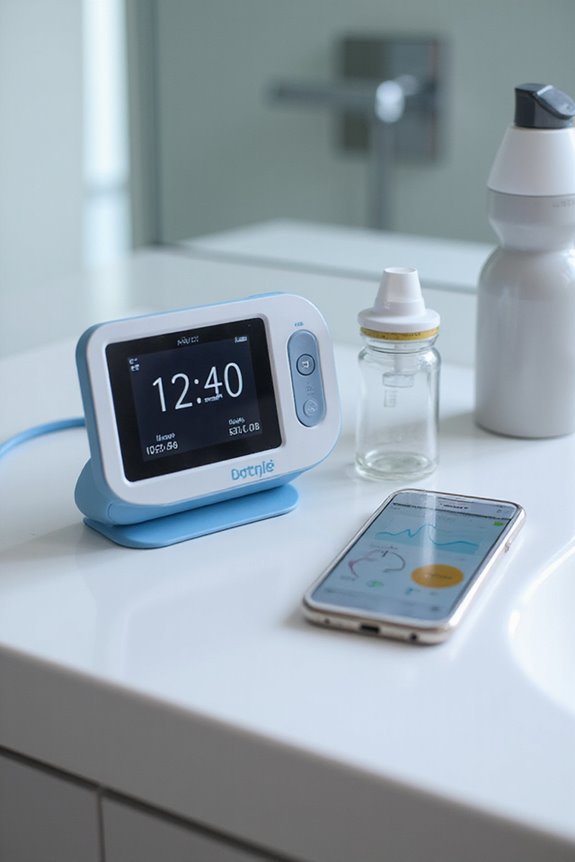
The rise of artificial pancreas and automated insulin delivery systems marks a transformative shift in diabetes management. These systems integrate an insulin pump, continuous glucose monitor (CGM), and an advanced algorithm for optimized insulin delivery.
Key Features:
- User-Centric Design: Modern systems prioritize ease of use, ensuring that diabetes management fits seamlessly into daily routines.
- Algorithm Optimization: Enhanced algorithms allow for real-time adjustments, improving blood glucose control and increasing time in range.
Recent developments include the approval of the Omnipod 5 and the introduction of Mylife Loop, which emphasizes interoperability. These advancements considerably reduce the burden of multiple daily injections, fostering greater user satisfaction and improved overall health outcomes. Additionally, the integration of mobile health app compatibility allows users to track glucose trends and manage their diabetes more effectively.
Integration of Artificial Intelligence in Diabetes Management
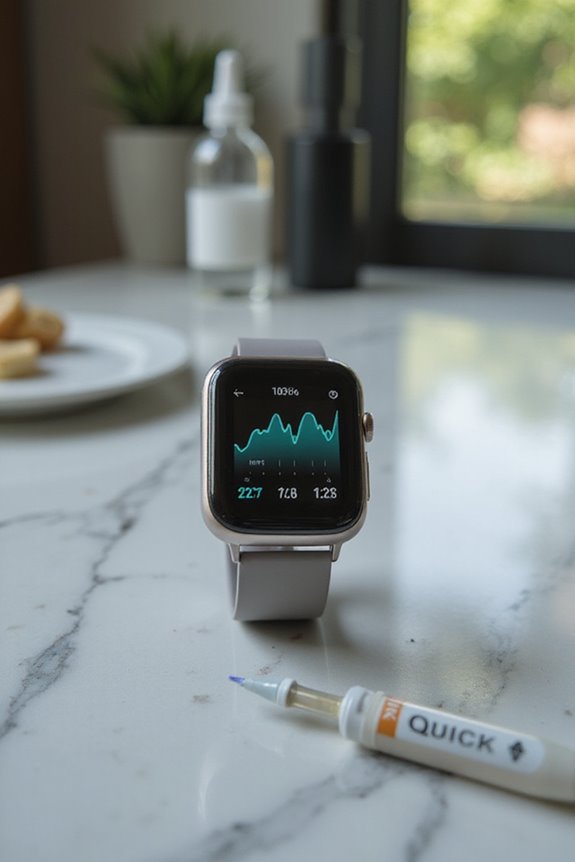
As artificial intelligence (AI) increasingly integrates into diabetes management, it is revolutionizing the way healthcare professionals and patients approach treatment.
AI Personalization
- AI platforms synthesize real-time patient data to create individualized treatment protocols, adjusting to therapy responses.
- Personalized nutrition plans are recommended based on dietary intake and glucose responses.
- Virtual AI diabetes coaches engage patients with tailored reminders and real-time feedback.
Predictive Analytics
- AI-enhanced continuous glucose monitors (CGMs) identify glucose fluctuation patterns, predicting hypoglycemia or hyperglycemia risks.
- Predictive alerts enable timely adjustments to lifestyle and medication, improving glycemic control.
- Studies indicate that AI-CGM integration supports smarter insulin dosing and individualized dietary changes, enhancing overall diabetes management efficiency. Additionally, continuous glucose monitoring has been shown to minimize fingerstick frequency for user comfort, enhancing the overall experience for patients.
Emerging Trends in Disposable and Single-Use CGM Devices
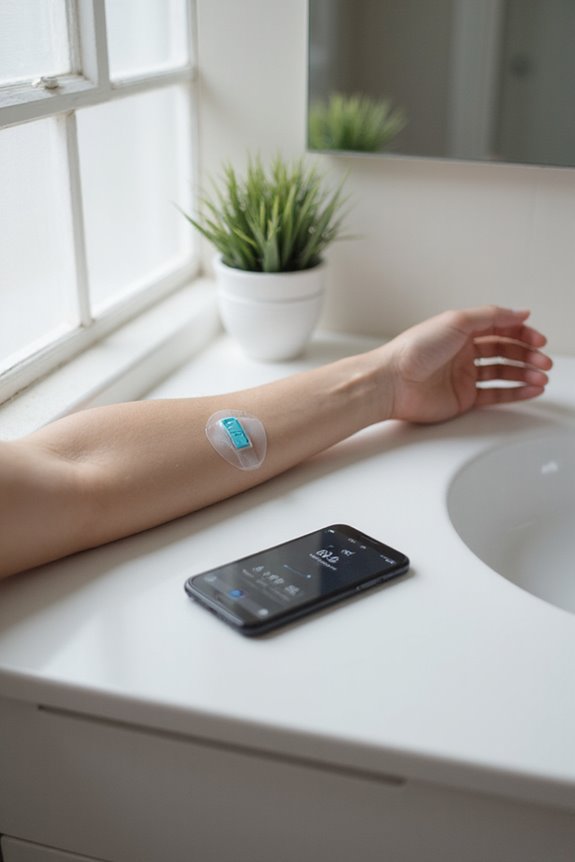
Emerging trends in disposable and single-use continuous glucose monitoring (CGM) devices are reshaping diabetes management, particularly in light of the growing global diabetes epidemic.
- Market Growth: The CGM market is projected to grow at a CAGR of 3.5% to 15%, driven by rising diabetes prevalence and the convenience of disposable sensors.
- User Experience: These devices eliminate frequent calibration, enhancing user experience by streamlining monitoring.
- Technological Advances: Innovations include enzyme-based sensors and wireless connectivity, enabling real-time tracking and integration with insulin pumps.
- Market Expansion: Increasing awareness and healthcare improvements in emerging economies further support the adoption of disposable CGMs.
As this segment continues to evolve, it promises to enhance diabetes management for a growing community of users seeking effective solutions. Additionally, advancements in user-friendly designs are making these devices more accessible and appealing to a broader audience.
Regulatory and Industry Trends in Glucose Monitoring Technology
Regulatory and industry trends in glucose monitoring technology are considerably shaping the landscape of diabetes management.
Regulatory Framework
- Regulatory agencies, such as the U.S. FDA and EMA, enforce rigorous standards for device accuracy and safety.
- New emphasis on real-world evidence and post-market surveillance guarantees long-term device performance.
- Expedited pathways for innovative devices are becoming commonplace.
Market Dynamics
- The CGM market is expected to grow from USD 12.7 billion in 2025 to over USD 54.5 billion by 2035, reflecting a CAGR of 15.7%.
- Increased diabetes prevalence drives demand for advanced technologies.
- Emerging subscription models and partnerships among stakeholders are reshaping competitive dynamics.
These developments illustrate the intricate relationship between regulatory challenges and market dynamics in glucose monitoring.
Frequently Asked Questions
How Do CGMS Impact Daily Life for Diabetes Patients?
CGMs notably impact daily life for diabetes patients by providing real-time data that facilitates lifestyle adjustments. This technology encourages mindful eating and timely interventions, fostering a supportive community atmosphere for individuals managing their condition.
Are There Any Side Effects of Using CGM Devices?
Amidst the promise of precise glucose readings, users often face skin irritation at the sensor site, while concerns about sensor accuracy loom large. Managing these challenges can evoke a shared sense of belonging among fellow users.
What Is the Cost of Continuous Glucose Monitoring Systems?
The cost of continuous glucose monitoring systems varies widely, with factors such as insurance coverage greatly influencing affordability. A cost comparison reveals annual expenses ranging from $1,200 to $7,000, affecting accessibility for many individuals.
How Often Should CGM Sensors Be Replaced?
The replacement frequency of CGM sensors varies considerably, typically ranging from 7 to 15 days. Sensor longevity is influenced by factors like adhesive durability and user needs, underscoring the importance of timely replacements for effective glucose monitoring.
Can CGMS Be Used During Pregnancy Safely?
In a case study, a pregnant woman using continuous glucose monitoring (CGM) maintained stable glucose levels, enhancing pregnancy safety. Research confirms CGM effectively reduces complications, showcasing its potential benefits for managing diabetes during pregnancy.


